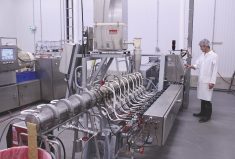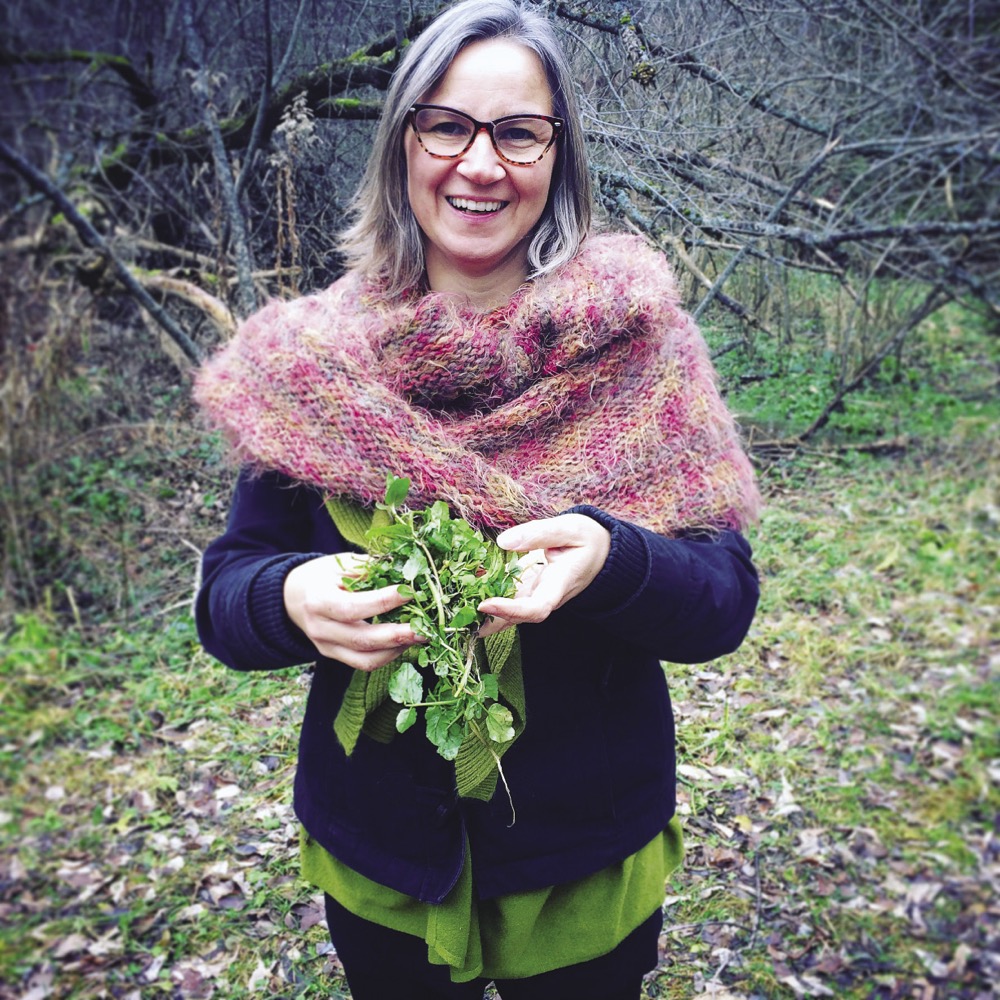Canada’s food and beverage industry, defined as all the activities involved in taking raw agricultural output and processing it into finished products for consumers, employs 290,000 people and provides about 70 per cent of all processed food and beverage products sold in Canada.
The sector is Canada’s second-strongest manufacturing industry with economic activity of $117.8 billion in 2019, representing 17 per cent of total manufacturing sales, and two per cent of Canada’s GDP, according to Agriculture and Agri-Food Canada (AAFC).
The food processing industry is the largest manufacturing industry in most provinces, and is particularly important in Ontario and Quebec, which may not be surprising as those provinces account for 62 per cent of sales.
Read Also

What to consider when setting up farm-related business ventures
Things to consider before launching a farm-adjacent side business.
Will there be more? After surviving a challenging period of transition, the consensus is the sector’s opportunity looks brighter than ever. But is the industry up to the challenge? That’s a far harder question.
Got your attention?
The basic structure of the industry won’t be a surprise to most farmers. The federal ag department lists meat-product manufacturing as the largest food and beverage processing industry, accounting for 25 per cent of all manufacturing sales and $30 billion in 2019.
Dairy product manufacturing is the second-largest industry with sales of $14.8 billion.
Grain and oilseed milling sales came in at $10.6 billion.
Meat product manufacturing is the most significant food industry in Quebec, Ontario, Manitoba and Alberta; beverage manufacturing is the most important sub-sector in B.C.; and grain and oilseed milling is the largest food industry in Saskatchewan.
That robust-sounding overview may be misleading, though, at least according to a recent Dalhousie University report, which found fundamental signs of weakness underneath the sales figures.
The Dalhousie study says the sector isn’t investing enough in itself to be sustainable. It also found that its margins are thin and that grocers’ fees are piling up to the detriment of the industry’s financial outlook.
That’s bad enough, but according to the report, the most worrisome trend may be that the industry’s processing plants are aging. From 2009 to 2019, Canada saw only 20 new federal food-processing plants open.
In the same period, a whopping 4,000 American plants opened their doors. That’s 200 times more new plants in a country that has a population only 10 times the size of Canada’s.
Why such a disparity?
“We had a lazy agri-food economy, relying on a weak currency. That’s basically it,” says Sylvain Charlebois, director of the Agri-Food Analytics Lab at Dalhousie.
He isn’t the only one to think that way. The House of Commons Standing Committee on Agriculture and Agri-Food, which studied how to increase Canada’s ability to process more of its own food, has reported that too much Canadian agricultural output is exported as raw commodities and re-imported as processed consumer products.
The committee says Canada consumes only about 30 per cent of its agricultural output, with some sectors, like canola, exporting as much as 90 per cent of their product.
To a degree, it makes sense. For instance, Martin Scanlon, dean of the University of Manitoba’s faculty of agricultural and food sciences, says Canada excels at producing grains and grain legumes, and he adds that, physiologically, grains and oilseeds are very robust materials that can be readily shipped around the globe without much damage.
High-priced items that aren’t physiologically robust, like pigs in Manitoba, get shipped young and then grown finished at U.S. processing plants to be slaughtered nearer to big conurbations like the Twin Cities and Chicago, Scanlon says.
Canada is, unfortunately, much better at exporting raw commodities than it is creating value-added products, adds Michael Graydon, CEO of Food, Health & Consumer Products of Canada (FHCP). FHCP represents over 100 businesses in the consumer-packaged goods industry.
“This is a recognized and long-standing issue that needs to be addressed through investment in food manufacturing infrastructure,” Graydon says.
However, he points out, 95 per cent of all program and research funding in AAFC is directed toward primary production, and not on the value-added sector.
COVID-19
“Hopefully the pandemic raised enough awareness with governments at all levels to evaluate their current funding models and bolster investment,” Graydon says.
Enhancing homegrown capacity is crucial to food independence and security, he says, which is a fact that more governments may have come to recognize. Farm Credit Canada’s March 2021 Food and Beverage report stated that federal and provincial governments identified food processing as a key contributor to economic recovery.
“The focus of government investment is to increase food autonomy and focus on safe plant output. This investment, along with very low interest rates, could be the catalyst the sector needs to solve a productivity deficit,” the report stated.
Has the turnaround started?
U of M’s Scanlon says concerns about poor food manufacturing sector performance have lingered since about 2008 as output of processed foods fell and imports rose. But there’s been a reversal since 2018, he says.
“Certainly, in Manitoba, I have not seen the processing sector experiencing this degree of growth while I have been in my job — nearly 30 years now,” says Scanlon.
New investment across Canada suggests an upward trend for domestic processing, and Charlebois says he’s encouraged by new projects in the last couple years, such as:
- Roquette’s pea plant in Portage la Prairie, Man.
- Merit Functional Foods’ pea and canola processing Winnipeg plant.
- Meatless Farms’ Lovingly Made Ingredients facility in Calgary.
- The return of Kraft-Heinz ketchup production to Canada, to be produced at its flagship Mount Royal, Que. plant.
- Anheuser-Busch InBev updating its London, Ont. Labatt Brewing facility to produce its Stella Artois and Corona brands.
Investment is growing in part because there’s greater recognition of what Canada can offer with its available space, stable regulatory systems, clean water and abundant energy.
Plus, with the world pricing carbon, more companies are thinking about onshoring, Charlebois says. Carbon pricing represents an incentive to process domestically instead of exporting raw materials overseas and importing the finished product.
“In an economy where carbon is priced, I think onshoring activities will expand,” he says. “That will give farmers more opportunities.”
Optimism
A year ago, Charlebois wasn’t sure where domestic processing was going, or if governments fully recognized the food processing sector as an anchor piece to Canada’s food security strategy and its food strategy overall.
“Before, governments were always attracted to projects that would generate jobs. But we’ve shown now it’s not just a job game, it’s more about control, and strategy,” Charlebois says.
He feels more optimistic with the change of focus.
“I think over the last couple of years, there’s been an emphasis made on processing because we recognize without processing, it’s hard to support farmers, and it’s hard to really control the vast supply chain,” Charlebois says.
FHCP’s Graydon also sees more reasons for predicting growth in Canada’s domestic food-processing sector.
“Key federal initiatives, like the Agri-Food Economic Strategy Table (EST), National Food Policy and the Food Processing Industry Roundtable, all recognize the untapped potential of the agri-food industry, and in particular, the critical role that value-added food manufacturers play in making Canada a global leader in food production and innovation,” Graydon says.
Challenges ahead
But although political will to build a world class agri-food sector in Canada is growing, other countries are thinking the same way, and they’re aiming to repatriate their strategic sectors and become more self-reliant.
“With this in mind, they are offering generous incentive packages to attract investment, especially south of the border, where extensive ‘Buy American’ policies remain in place,” Graydon says. “This is putting growing pressure on companies in Canada to leave and take their jobs with them.”
Graydon also believes governments here can do more to create a favourable business environment that both attracts new investments and incentivizes existing companies to stay, including lessening what the industry considers burdensome regulations.
“By ramping up our domestic food processing capacity, we create an environment that enhances food security, stability, innovation, competitive pricing, job growth and diversity,” Graydon says.
Tight labour supply
Governments also need to address manufacturing’s labour gap, Graydon says. “Almost 28,000 jobs in food manufacturing remain vacant right now … Our members have told us that the chronic lack of labour has resulted in investments going to other jurisdictions or not happening at all.”
Graydon sees an opportunity to transition jobless Canadians into new careers while filling a much-needed labour gap. There’s a huge “but” though. Dalhousie’s report says the labour shortage is due in part to working conditions and wages, “which are unattractive and unable to retain workers.”
“We need to start looking at automation much more seriously,” Charlebois says. Machines don’t take sick days or get into labour disputes.
The investment would pay off, he believes. “Machines are more predictable than people … and stability pays off.”
















